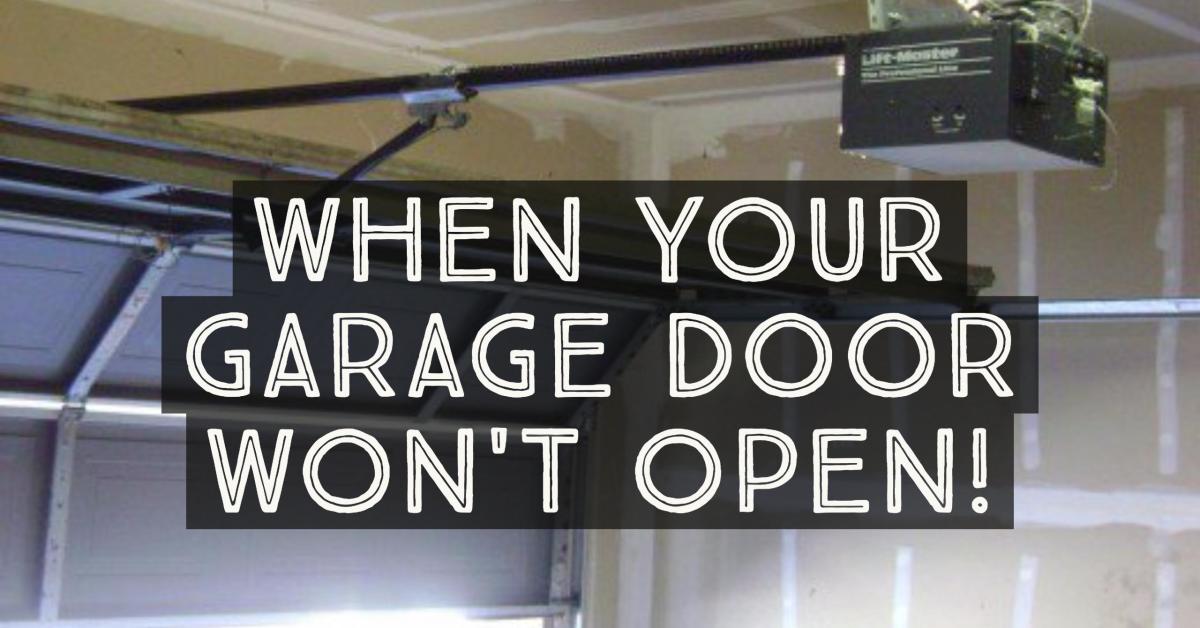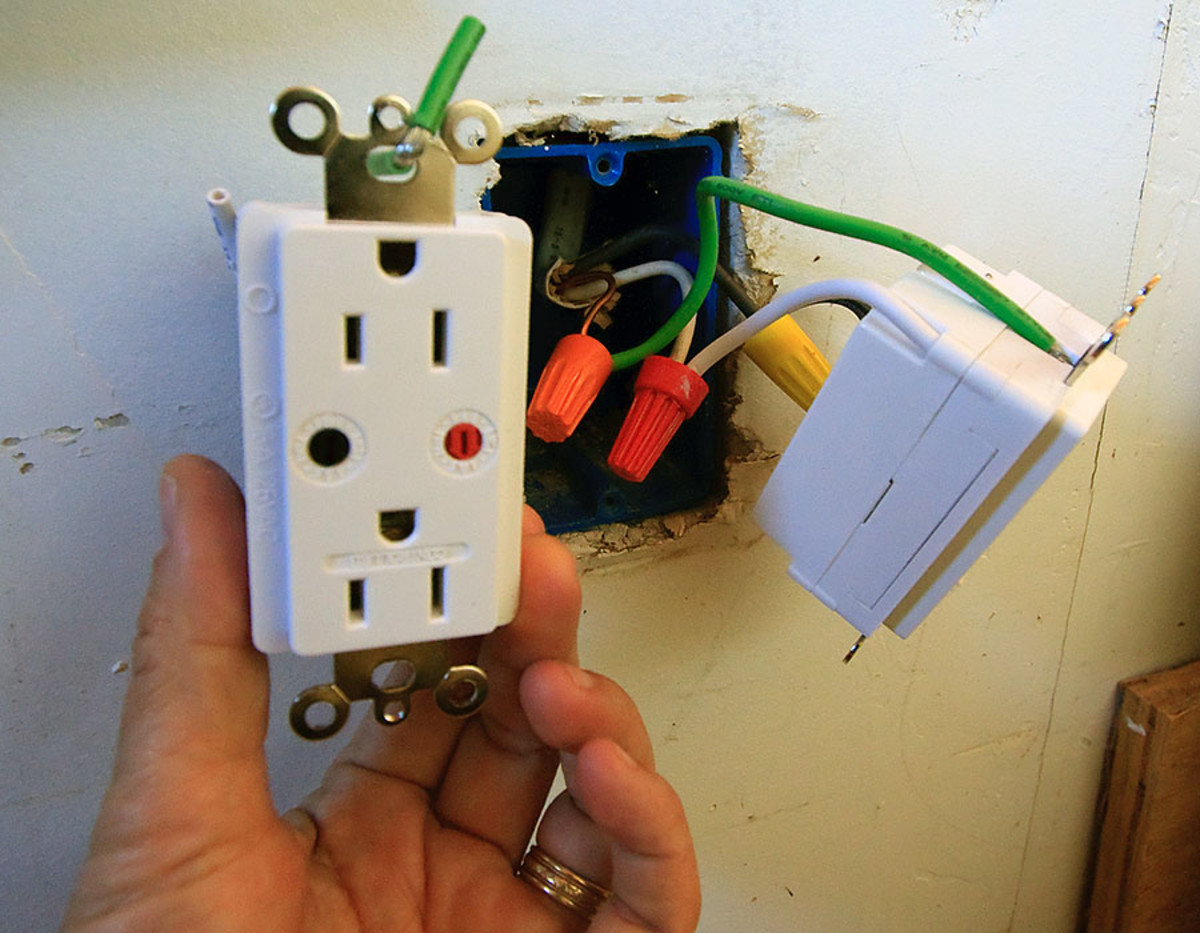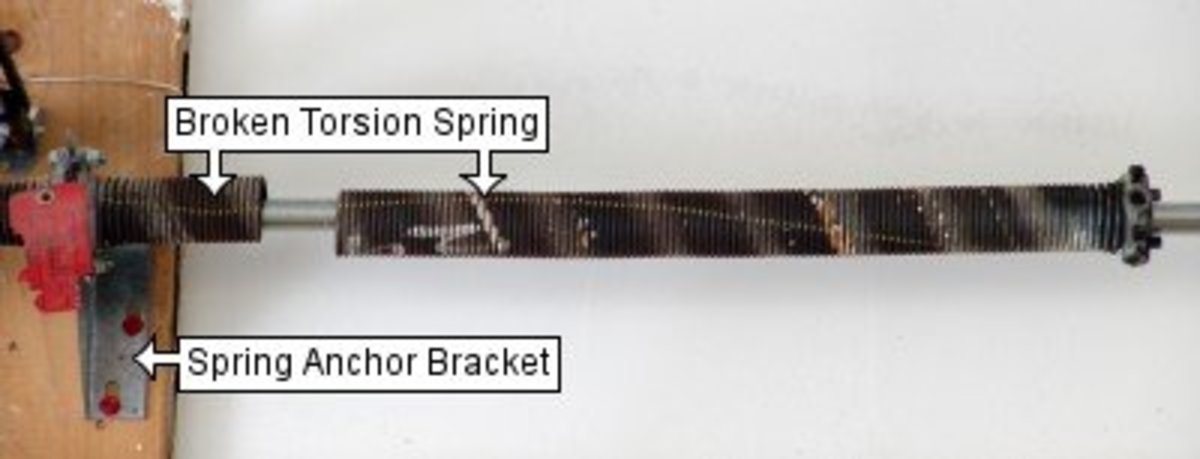
Why Your Automatic Garage Door Won't Open (or Shut)
- The photo eye is blocked.
- Its power source is disrupted.
- The torsion springs are broken.
- Remote control malfunction.
- Snapped or loose cables.
- Sensitivity needs adjustment.
- The limit setting is off.
- The door has dislodged from its track.
- Something is blocking the door.
- "Disconnect" has been switched.
- The door is locked.
Read on for information, video tutorials, and troubleshooting tips for these issues. You'll also find tips for opening the door manually while you're trying to figure out how to fix the problem!
#1 Your Photo Eye is Blocked
Most garage doors from the past 15-20 years have a photo eye which detects if a person or object is blocking the door from lowering all the way. The photo eye will be about 4-6 inches off of the ground for most doors, with an eye that is about the size of a pea. It shoots a laser across the length of the garage that, if interrupted, will cut off the signal used to lower and raise the door.
Check to see if the cord attached to the eye is cut or damaged; occasionally, a rainstorm or leak can damage the photo eye.
Dirt and dust can clog the eye and block the laser beam, so a thorough cleaning with a tissue can sometimes solve this issue.

#2 Your Operator's Power Source Is Disrupted
Sometimes, people unplug their power source and then wonder why their garage door opener fails to work. Sounds ridiculous, I know, but it does happen. Make sure that your garage door opener is plugged into a working outlet. Outlets sometimes go out without warning, so you can check to see if the outlet is working by plugging another working electronic device into it. Also, check your circuit breaker, fuse, or GFCI.

#3 Your Garage Door Torsion Springs Are Broken
SNAP... bang... boom. That is the sound of a garage door torsion spring breaking. It can be a very loud noise that sounds like a firecracker or gunshot. Springs are rated for a certain number of cycles and are the first thing that will break in your garage door assembly. Broken springs are the #1 source of customer calls for garage door repair companies. If you have a broken spring, you should NEVER try to open the door, as it can be very dangerous. This repair should be left to a professional or someone with the right tools and skills.
#4 Your Cables Have Snapped or Popped Off
Just like on a bike sprocket, your cables can sometimes become disengaged. Oftentimes, when a torsion spring breaks, the garage door cable will snap as a result. Sometimes, the cable will cause damage to a vehicle or wall, and if a person happens to be in the way of the cable it can cause serious harm. If you cables have snapped, you should call a professional to help you. See the video above.
#5 Your Sensitivity Is Out of Adjustment
This can happen to a newly installed garage door or an older one: if the sensitivity is set too low or high, the door will not open. Read the manufacturer's directions to reset the sensitivity. You can adjust the close force and limit switch to the correct levels and you should be good to go!
How to Program Your Garage Door Remote
#6 Your Remote Control Is Malfunctioning
When your garage door won't open with the remote, there are few things that can cause this problem:
- You might be out of range.
- The antenna on the motor could be damaged or blocked from the signal; make sure it is hanging down from the motor.
- If the door opens with the wall switch, a simple battery change in the remote should do the trick
- If all these fail, try reprogramming the remote.
#7 The Limit Setting Needs Adjustment
If the door closes but then immediately pops open again, you'll need to check the limit settings, which help the mechanism determine how far to move the door in order to close it properly. If the settings are off, the door will hit the ground before the opener believes it should. It will assume that it has hit an obstacle and will automatically backtrack to avoid damage. Check the owner's manual or the buttons on the motor to adjust the limit settings. It may take some trial and error to get the setting just right.
- Get a ladder and find the limit switch adjustment knob. Some models are labeled “up” and “down.” Consult your owner's manual for help.
- If your door isn't closing, adjust it down. If it won't go up, adjust it up. A full turn of the screw equals about two inches of door movement on most models.
- It's smart to make very small adjustments so you don't overdo it and end up slamming the door open or shut. Keep testing it to see if it works.
#8 The Door Is Off Its Track
Of course, if the door is off track, it won't slide properly.
- Make sure the door is rolling smoothly along its metal track.
- Check the track for bends, bumps, gaps, or obstacles.
- Listen to and watch the door's progress: Do you hear any squeaks or areas of friction? Does the door seem to slow down or get stuck along the way? If so, you'll know that section of track is misaligned.
To fix this problem, loosen the screws that hold the track to its frame, gently tap the track back into the proper position, then retighten the screws. A level and a rubber mallet might help.
#9 There's an Unseen Obstacle
In order to prevent injury, garage doors automatically reverse if they come into contact with an obstacle. When the door closes halfway but then reverses for no apparent reason, this may be a sign that there is something preventing it from closing, something that you can't see. Check the tracks for stuff like dirt, rocks, bits of trash, or other debris. Give the tracks a wipe-down to dislodge anything that might be getting in the way.
#10 "Disconnect" Has Been Switched
Every garage door opener comes with a disconnect switch, cord, or knob that allows you to work the door manually in case of a power outage. Check to make sure that you haven't accidentally disconnected the motor.
#11 It's Locked!
This one falls squarely into the category of user error. If the motor is running but the door doesn't budge, it's time to ask yourself if it might be locked. Check to see if there are any metal parts that have slid down to bar access. If there are, locate the locking knob or handle and use it to disengage the lock.
source: https://dengarden.com/garage/5-Most-Common-Reasons-Why-Your-Garage-Door-Wont-Open-in-Phoenix-AZ
source: https://dengarden.com/garage/5-Most-Common-Reasons-Why-Your-Garage-Door-Wont-Open-in-Phoenix-AZ




